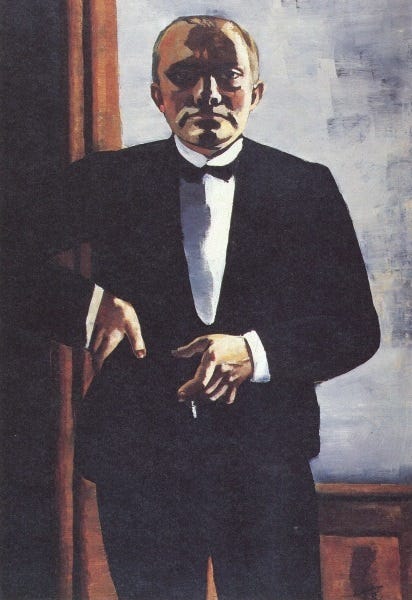Max Beckmann, Ambiguous Prophet
The current exhibition of the German painter reminds us of his achievements and his missteps.
“Max Beckmann adopted early on a position against the avant-garde and did not shy away from public controversy when doing so.”[i] So writes the curator of a new exhibition of Max Beckmann at Neue Galerie, New York (closes 15 January). The reference is to a dispute between Beckmann and Franz Marc and Blaue Reiter, supporters of more overt forms Modernism, but Beckmann was willing to reject affiliation with the Neue Sachlichkeit group, whose work his entirely congruent with his. He would ally himself with the (deceased) grand master of Modernism, Paul Cézanne, and austere quasi-prophet Georges Rouault, figures who were venerable and isolated, rather than with artists who were his peers. One cannot help seeing Beckmann’s choices as deliberate and his detachment as strategic.
When considering artists to model oneself upon, the young artist of today may well choose Max Beckmann. He was in many ways exemplary. He was technically skilled (adroitly moving between different mediums, exploiting the potential of each to their fullest); he had an eye for the memorable image; he was a big reader and intellectually curious, willing to absorb new influences and change his position, though not capricious; he worked hard and was greatly ambitious for his art, driven by his outsize ego. After all, he wrote upon contemplating one of his paintings in a museum, “I was deeply moved by myself”.[ii]

